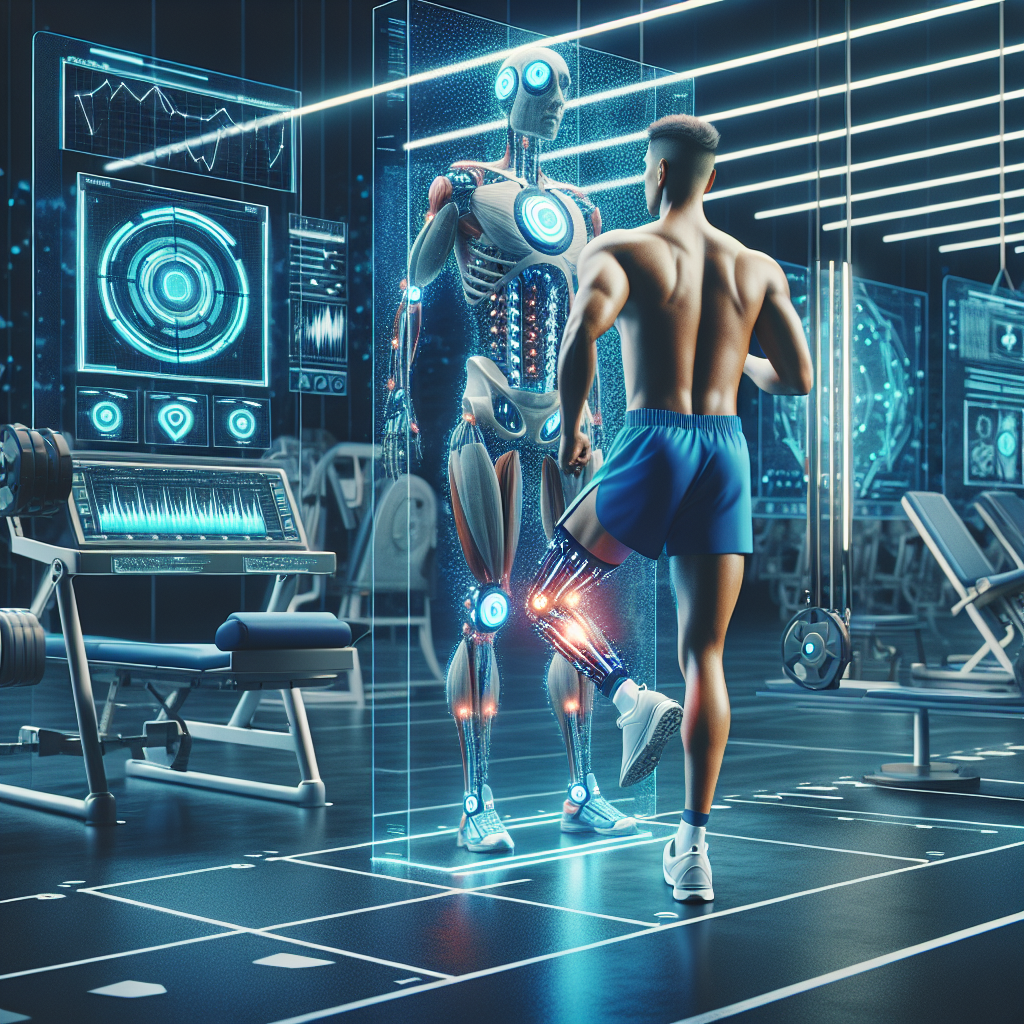AI-Powered Sports Injury Rehabilitation Programs: Revolutionizing Recovery
Sports injuries are a common occurrence among athletes of all levels, from professionals to weekend warriors. These injuries can range from minor sprains and strains to more serious injuries like torn ligaments and fractures. Regardless of the severity, proper rehabilitation is essential to ensure a full recovery and prevent future injuries.
In recent years, advancements in technology have paved the way for innovative approaches to sports injury rehabilitation. One such approach is the use of artificial intelligence (AI) to power rehabilitation programs. These AI-powered programs are revolutionizing the way athletes recover from injuries, providing personalized and effective treatment plans that optimize the rehabilitation process.
How AI is Changing Sports Injury Rehabilitation
AI-powered sports injury rehabilitation programs utilize machine learning algorithms to analyze data and create personalized treatment plans for athletes. These programs can take into account a wide range of factors, including the type and severity of the injury, the athlete’s age and fitness level, and the specific demands of their sport. By analyzing this data, AI can tailor rehabilitation programs to the individual needs of each athlete, ensuring that they receive the most effective treatment possible.
One of the key benefits of AI-powered rehabilitation programs is their ability to provide real-time feedback to athletes. Through the use of wearable devices and sensors, AI can monitor the athlete’s progress and adjust their treatment plan accordingly. This feedback can help athletes track their progress, identify areas for improvement, and stay motivated throughout the rehabilitation process.
Another advantage of AI-powered rehabilitation programs is their ability to adapt to changes in the athlete’s condition. For example, if an athlete experiences a setback or develops new symptoms during rehabilitation, AI can quickly adjust their treatment plan to address these issues. This flexibility can help athletes recover more quickly and reduce the risk of re-injury.
Additionally, AI-powered rehabilitation programs can help athletes make more informed decisions about their recovery. By providing personalized treatment plans based on data-driven analysis, athletes can better understand their injury and the steps needed to heal properly. This knowledge can empower athletes to take an active role in their recovery and make healthier choices that support their long-term athletic performance.
FAQs
Q: How does AI analyze data to create personalized treatment plans?
A: AI-powered rehabilitation programs use machine learning algorithms to analyze a wide range of data, including the athlete’s injury history, physical condition, and performance metrics. By processing this data, AI can identify patterns and trends that inform the creation of personalized treatment plans tailored to the individual needs of each athlete.
Q: What types of injuries can AI-powered rehabilitation programs treat?
A: AI-powered rehabilitation programs can be used to treat a wide range of sports injuries, including sprains, strains, fractures, and ligament tears. These programs can also help athletes recover from overuse injuries, such as tendonitis and stress fractures. Additionally, AI can be used to prevent injuries by analyzing data to identify risk factors and recommend strategies to mitigate them.
Q: How can athletes access AI-powered rehabilitation programs?
A: AI-powered rehabilitation programs are typically offered through sports medicine clinics, physical therapy practices, and sports performance centers. Athletes can work with healthcare providers and sports professionals to access these programs and receive personalized treatment plans that support their recovery and performance goals.
Q: Are AI-powered rehabilitation programs effective?
A: Research has shown that AI-powered rehabilitation programs can be highly effective in helping athletes recover from injuries and improve their performance. By providing personalized treatment plans based on data-driven analysis, AI can optimize the rehabilitation process, reduce recovery time, and prevent future injuries. Athletes who use AI-powered programs often report faster recovery, improved athletic performance, and a reduced risk of re-injury.
Q: What are the benefits of using AI-powered rehabilitation programs?
A: AI-powered rehabilitation programs offer a number of benefits to athletes, including personalized treatment plans, real-time feedback, flexibility in adjusting treatment plans, and informed decision-making. By leveraging AI technology, athletes can receive the most effective and efficient rehabilitation possible, allowing them to recover quickly and return to peak performance with reduced risk of re-injury.
In conclusion, AI-powered sports injury rehabilitation programs are revolutionizing the way athletes recover from injuries. By leveraging machine learning algorithms to analyze data and create personalized treatment plans, these programs can optimize the rehabilitation process, reduce recovery time, and prevent future injuries. Athletes who use AI-powered programs often report faster recovery, improved performance, and a reduced risk of re-injury. As technology continues to advance, AI-powered rehabilitation programs are poised to become an essential tool for athletes looking to optimize their recovery and performance.

